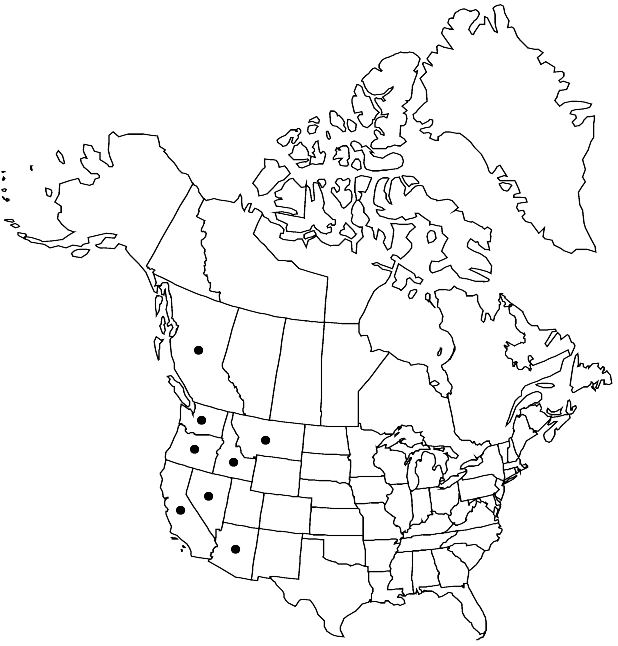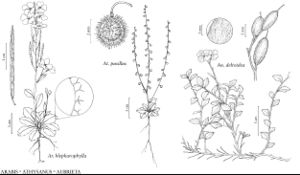Athysanus pusillus
Bull. Calif. Acad. Sci. 1: 72. 1885.
Plants sparsely to densely pubescent proximally, sometimes glabrous distally. Stems (0.2–)0.5–3(–5) dm. Basal leaves: petiole 0.1–0.5 cm; blade oblanceolate, obovate, or oblong, 0.3–1.5(–2) cm × (1–)2–6(–8) mm, margins entire or dentate, apex acute to obtuse, surfaces uniformly pubescent, trichomes cruciform and 3-rayed, adaxially sometimes mixed with coarse, simple ones. Cauline leaves 1–6; blade similar and equaling or smaller than basal. Fruiting pedicels slender, (1.5–)2–4(–6) mm. Flowers: sepals 0.5–1 × 0.3–0.7 mm; petals oblong, 1.5–3 × 0.5–1 mm; filaments 0.4–0.6 mm; anthers (0.05–)0.1–0.2(–0.25) mm. Fruits usually orbicular to obovate, rarely broadly oblong, 1-locular, not twisted; valves thin, veins sometimes prominent, usually pubescent, rarely glabrous, trichomes simple, to 0.5 mm, hooked (sometimes restricted to margins, or mixed with smaller, sessile, cruciform or 3-rayed ones); septum absent; ovules 2(–4) per ovary; style 0.05–0.2 mm. Seeds 1, (0.8–)0.9–1.1(–1.2) × (0.5–)0.7–0.9(–1) mm. 2n = 26.
Phenology: Flowering Feb–Jun.
Habitat: Open grassy slopes, grassy glades in woodlands, chaparral, sandy and gravelly flats, flood plains, rock outcrops, cliffs and ledges, on limestone, serpentine, sandstone, granitic and basaltic substrates
Elevation: 0-1800 m
Distribution

B.C., Ariz., Calif., Idaho, Mont., Nev., Oreg., Wash., Mexico (Baja California).
Discussion
Records of Athysanus pusillus for Montana appear to be solely from Ravalli County, and for Nevada from Storey and Washoe counties.
Selected References
None.
